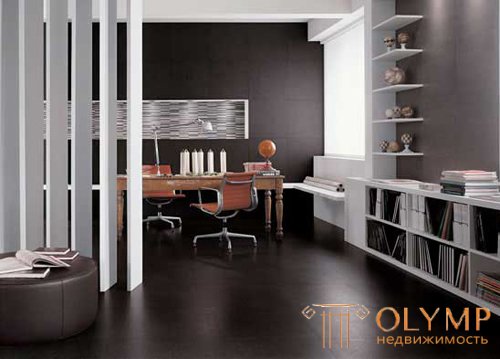
To onstructivism (fr. constructivisme from lat. constructio - construction) - avant-garde style (method, direction), developed in the 1920s and 1930s , the basis of the artistic image of which is not composition, but construction.
Designing is one of the methods of shaping based on accurate calculations of the physical properties of materials and the functions of an object. Design is one of the stages or components of the design process, mainly in the field of architecture and design. The purpose of design - the organization of the optimal functional relationship of the elements of the composition. In the history of art, including applied art, constructivist tendencies exist in a “hidden form”. At the turn of the XIX-XX centuries. In the wake of the anti-eclectic movement, Art Nouveau artists strove for a solid, clear, constructive basis for composition in architecture and decorative arts. In the style of Art Nouveau, the curved line became such a constructive basis; in the geometrical style of Austrian and English modernism - a square, a rectangle. Masters of these stylistic currents felt that extreme destructiveness destroys the composition. In the field of architecture, constructivist tendencies were reinforced by the introduction of new industrial technology and materials - iron, concrete, glass.
Constructivism in the interior is characterized by the aesthetics of expediency, the rationality of strictly utilitarian forms, purified from the romantic decorative modernism. Furniture is created simple, strict, convenient forms. The function, the purpose of each object is very clear. No bourgeois excesses. Simplicity is brought to the limit, to such a simplification, when things - chairs, beds, wardrobes - become just objects for sleeping, sitting.
A distinctive feature of the Constructivism Style in interior design is thoughtful functional solutions and strict adherence to their requirements, compact volumes with a clearly identified framework, technical clarity of the architectural form construction.

Style Constructivism in the interior, photo
Constructivism is completely devoid of a mysteriously romantic halo. He was purely rationalistic, obeying the logic of design, functionality, expediency. An example to follow was the achievement of technical progress, caused by the social conditions of life of the most developed capitalist countries and the inevitable democratization of society.
The birth date of constructivism is considered the beginning of the twentieth century. Its development is called a natural reaction to the sophisticated floreal, that is, the plant motifs inherent in the modern, which rather quickly tired the imagination of contemporaries and caused the desire to search for the new.
After the end of the First World War, constructivism in furniture gains important positions, relying on the authority of architects, whose innovative constructions sometimes served as their own interiors to demonstrate furniture experiments. Compared with the previous styles, such as Baroque and Ampir, Constructivism stands out the lack of stucco decoration. Built-in niches, backlights are widely used. Furniture in the style of Constructivism is different mobility and functionality. Constructivism style in the interior is quite laconic and clear, but not without unpredictability and bright artistic decisions.
The crisis of modernity came fairly quickly and at the end of the first decade of the century, it began to be replaced by a new style: constructivism. The basis of this new movement in European architecture and the art industry was the aesthetics of expediency, suggesting rational, strictly utilitarian forms, purified from the decorative romance of modernity.
In contrast to the interiors of the previous era of modernity, resembling a cozy sink, the houses of the constructivists called the future to high technologies, machine production and futuristic megalopolises. Design schools, created at that time, were taught not to create separate, albeit ingenious things, but to design the environment as a whole, creating the whole world of objects surrounding a person. In this case, the main thing was not the appearance, but the functionality of the objects. Furniture was regarded as a seating apparatus, rectangular planes and clear structures dominated its appearance.
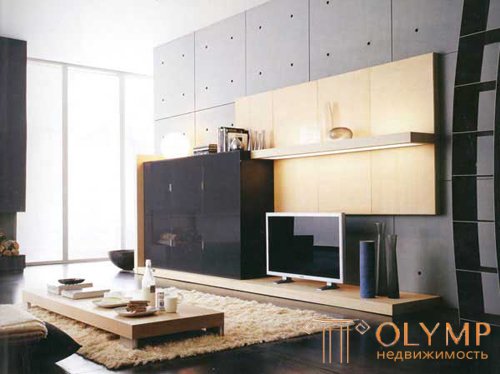
The premises in the epoch of Constructivism, the epoch of the new century and the new time, were transformed. The concept of “division into zones” disappeared, the extra walls-partitions disappeared, the space of the rooms became more spacious, preference was given to movable partitions, rather than to separate small rooms and corridors. In the forms of furniture, rectangular planes and clear lines dominated, floor-to-shelf windows, which created the feeling of moving forward towards the new and the unknown. The minimum decor and maximum functionality, the absence of ornament and the shine of the metal, colors: black, white, red, yellow, blue - this is the style of Constructivism.
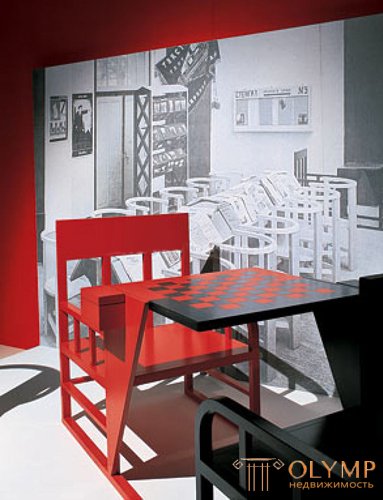
Style Constructivism in the interior, photo
The simplicity of Constructivism is brought to the limit, to such a simplification, when things — chairs, beds, wardrobes — become just objects for sleeping, sitting. Compared with the previous styles, such as Baroque and Ampir, Constructivism stands out the lack of stucco decoration. Built-in niches, backlights are widely used.
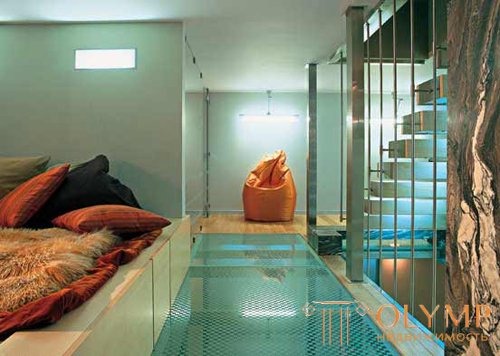
Style Constructivism in the interior, photo
Furniture in the style of Constructivism is different mobility and functionality. Constructivism style in the interior is quite laconic and clear, but not without unpredictability and bright artistic decisions.
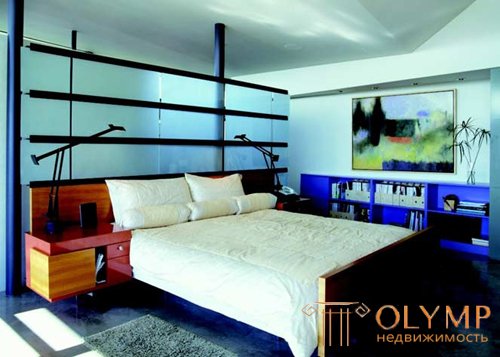
Style Constructivism in the interior, photo
All things designed by constructivists - furniture and interiors in general - were distinguished by maximum functionality and minimal decor. The ornament in them was completely absent, color accents were allowed - metal shine, noble black, pure white and rich simple colors - red, yellow, blue. These colors were considered a reflection of the philosophical and spiritual values of the era.
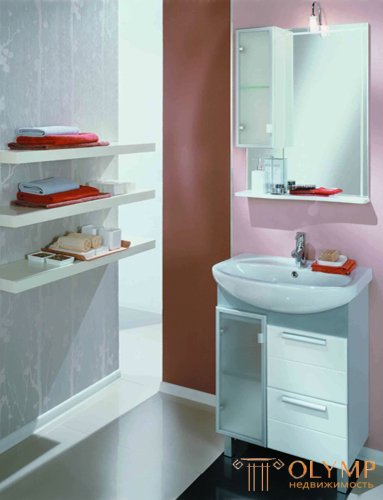
Style Constructivism in the interior, photo
Constructivist artists create innovative fabrics, clothes, dishes, in which clear and simple-shaped color spots in combination with clear prickly lines and catchy typeface created characteristic of the era things-posters.

Style Constructivism in the interior, photo
Constructivism in the architecture of buildings manifested itself in the appearance of “functional housing” oriented towards certain categories of citizens. One example of this is the appearance of small apartments. At this time, the first standards of footage of the area of the room appeared, which were considered the most suitable for the worker’s home and were imposed as a kind of social and architectural ideal. The use of new technologies of the time, monolithic concrete, metal frame, prefabricated concrete structures, allowed to increase the pace of construction and reduce the time frame for the construction of buildings. This era brought to the interior the principles of simplicity and harmony and integrity, some of which are relevant to this day.
Что бы оставить комментарий войдите
Комментарии (0)